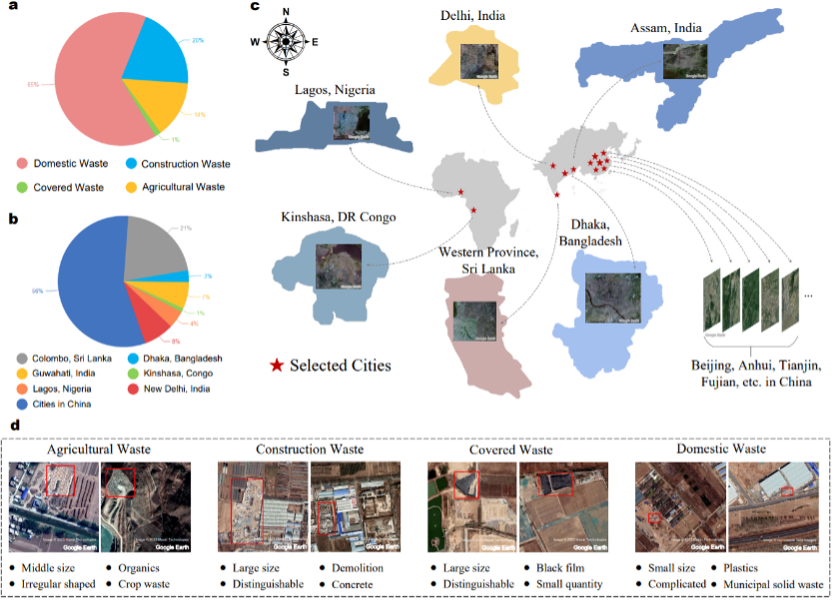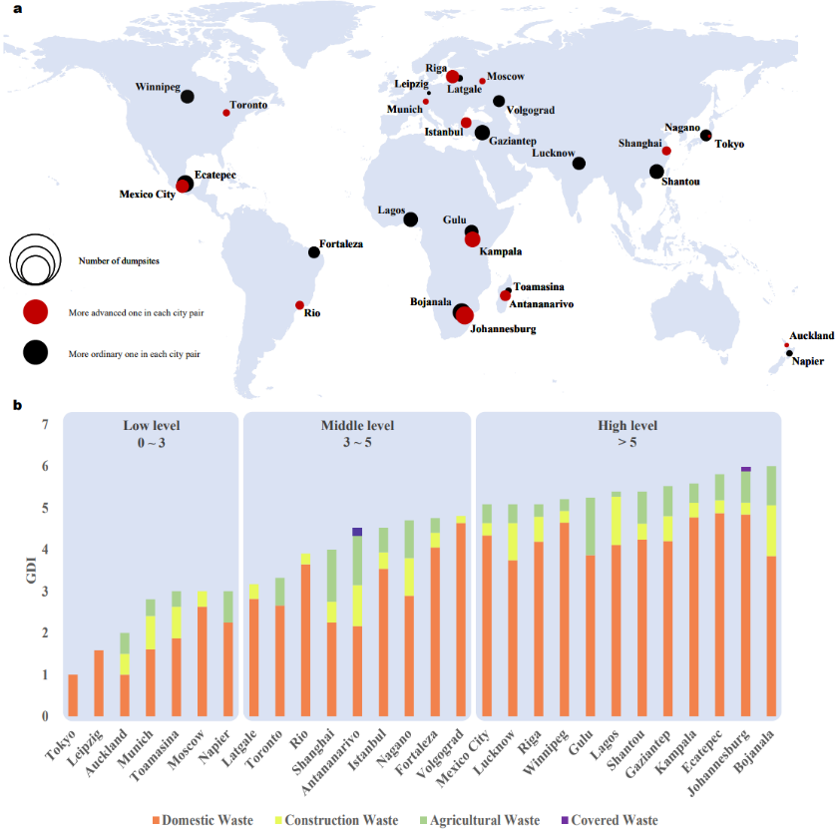Study Reveals Influencing Factors on Global Waste Distribution via Deep-Learning Based Dumpsite Detection from Satellite Imagery
Mar 31, 2023
With the advancement of global civilization, monitoring and managing dumpsites have become essential parts of environmental governance worldwide. However, dumpsite locations are difficult to pinpoint in a timely manner by local government agencies and environmental groups.
A study published in Nature Communications describes an efficient and intelligent dumpsite detection technique and analyses the correlation between the number of dumpsites and social/economic factors.
This work is proposed by a research team of the Key Laboratory of Network Information System Technology at the Aerospace Information Research Institute (AIR), Chinese Academy of Sciences (CAS).
The team constructed the first fine-grained remote-sensing dumpsite dataset with optical satellite images (Figure 1) and built a highly automated method for dumpsite detection combined with deep learning methods. This approach reduces the investigation time by more than 96.8% compared with the manual method.
The study focuses on the global distribution of dumpsites in urban areas (Figure 2). By analyzing the statistical correlation between the number of dumpsites and 18 social/economic factors in 28 cities worldwide, the study shows that the number of dumpsites is statistically correlated with factors such as development, urbanization and sanitation level but not with population density and education level.
This work improves the efficiency of dumpsite detection and provides a powerful detection tool. With this novel methodology, it is now capable of analyzing the relationship between dumpsites and various social attributes on a global scale, temporally and spatially.

Figure 1 Basic information of dumpsite dataset and typical examples of four categories. (a) The proportion of the four categories. (b) Quantity distribution of dumpsite samples in different countries. (The number of dumpsites in China is relatively large since data in China is easier to obtain in this study, and our validation results show that the proposed method has the generalizability to detect dumpsites globally.) (c) Geographic location of all selected cities in our dataset for training and verification. (d) Typical examples and characteristics of the four types of dumpsites. (Image by AIR)

Figure 2 Geographical distribution and Global Dumpsite Index (GDI) of selected areas for spatial statistics experiments. (a) Global distribution and quantity comparison of 28 areas for spatial analysis. Red and black circles represent two areas of the same country, and the area of the circle represents the number of dumpsites. (b) GDI and percentage of different types of dumpsites in 28 areas. The order is determined by GDI, and different colors represent different types of dumpsites. (Image by AIR)
Contact: luyq@aircas.ac.cn



News & Events